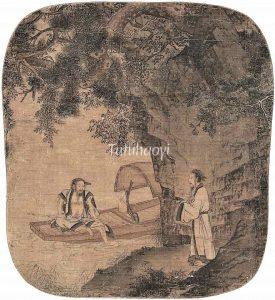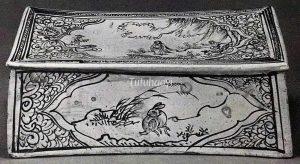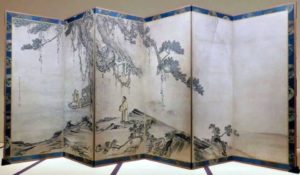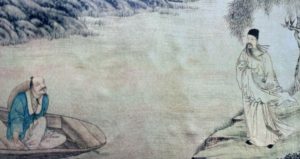Qu Yuan Meeting a Fisherman
屈原遇渔父(渔夫)
© Tutuhaoyi.com owns the copyright of the description content for the images attached. Quoting all or part of the description content on this page is permitted ONLY IF ‘Tutuhaoyi.com’ is clearly acknowledged anywhere your quote is produced unless stated otherwise. (本页描述内容版权归Tutuhaoyi.com所有,转发或引用需注明 “Tutuhaoyi.com”, 侵权必究, 已注开源信息的条目除外。)
These set of images portray the last moment of the life of Qu Yuan 屈原 (340-278 BCE), an important Chinese poet and politician, who was in exile in the wilderness because of his unsuitable political stance in court. He was talking with a fisherman on the bank of the Miluo River (汨罗江) in Hunan province before he threw himself into water in despair. In Qu Yuan’s autobiographical poem the ‘Fisherman’, the fisherman recognised the dishevelled man and greeted him. Qu Yuan claimed: ‘The whole world is soiled and I alone am clean; all men are drunk and I alone am sober (‘举世皆浊我独清,众人皆醉我独醒’) – that’s why I’ve ended up like this. I would rather jump into the river, bury myself in the bellies of fishes than sully my own purity in this vulgar world.’ The fisherman offered him a subtle metaphor before he rowed away: ‘When the water in the river is clear, it’s fit to clean my hat-tassels; when the river water is muddy, it will still suffice to wash my feet.’
Today, the Chinese people still commemorate Qu Yuan’s death by eating pyramid-shaped rice dumplings wrapped in leaves and taking part in dragon boat races on the fifth day of the fifth month of the traditional lunisolar Chinese calendar.
Communities in Vietnam and Korea also celebrate variations of this Dragon Boat Festival (龙舟节) as part of their shared cultural heritage.
Fig 1: album leaf, ink and colour on silk, 13th century, courtesy of the National Palace Museum, Taipei
Fig 2-3: rectangular ceramic pillow from Cizhou kiln, Jin dynasty (1115-1234), courtesy of Yeung Wing Tak collection
Fig 4-5: screen, ink and colour on paper, by Tohaku Hasegawa 長谷川等伯 (1539-1610), courtesy of MOA Museum of Art, Japan
Fig 6: ink and colour on silk by Chang Xinyong, 1907, courtesy of the National Museum of Finland





